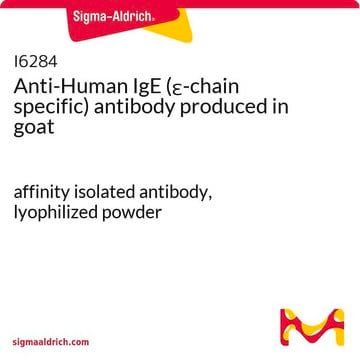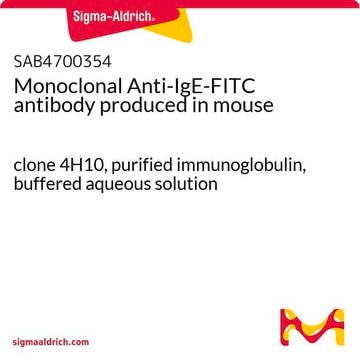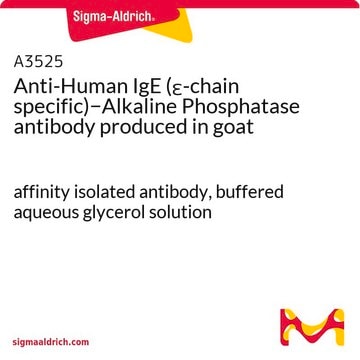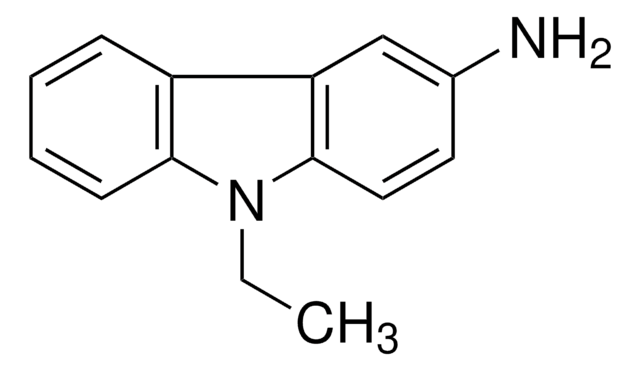A3076
Anti-Human IgE−Alkaline Phosphatase antibody, Mouse monoclonal
clone GE-1, purified from hybridoma cell culture
Sinónimos:
Monoclonal Anti-Human IgE, Monoclonal Anti-Human IgE−Alkaline Phosphatase antibody produced in mouse
About This Item
Productos recomendados
origen biológico
mouse
conjugado
alkaline phosphatase conjugate
forma del anticuerpo
purified from hybridoma cell culture
tipo de anticuerpo
secondary antibodies
clon
GE-1, monoclonal
formulario
buffered aqueous solution
reactividad de especies
human
técnicas
direct ELISA: 1:6,000
dot blot: 1:1,000
isotipo
IgG2b
Condiciones de envío
wet ice
temp. de almacenamiento
2-8°C
modificación del objetivo postraduccional
unmodified
¿Está buscando productos similares? Visita Guía de comparación de productos
Descripción general
Aplicación
Western Blotting (1 paper)
- immunoblot assays
- direct ELISA
- dot blot
Acciones bioquímicas o fisiológicas
Forma física
Nota de análisis
Cláusula de descargo de responsabilidad
Not finding the right product?
Try our Herramienta de selección de productos.
Código de clase de almacenamiento
10 - Combustible liquids
Clase de riesgo para el agua (WGK)
WGK 3
Punto de inflamabilidad (°F)
Not applicable
Punto de inflamabilidad (°C)
Not applicable
Equipo de protección personal
Eyeshields, Gloves, multi-purpose combination respirator cartridge (US)
Certificados de análisis (COA)
Busque Certificados de análisis (COA) introduciendo el número de lote del producto. Los números de lote se encuentran en la etiqueta del producto después de las palabras «Lot» o «Batch»
¿Ya tiene este producto?
Encuentre la documentación para los productos que ha comprado recientemente en la Biblioteca de documentos.
Los clientes también vieron
Nuestro equipo de científicos tiene experiencia en todas las áreas de investigación: Ciencias de la vida, Ciencia de los materiales, Síntesis química, Cromatografía, Analítica y muchas otras.
Póngase en contacto con el Servicio técnico












